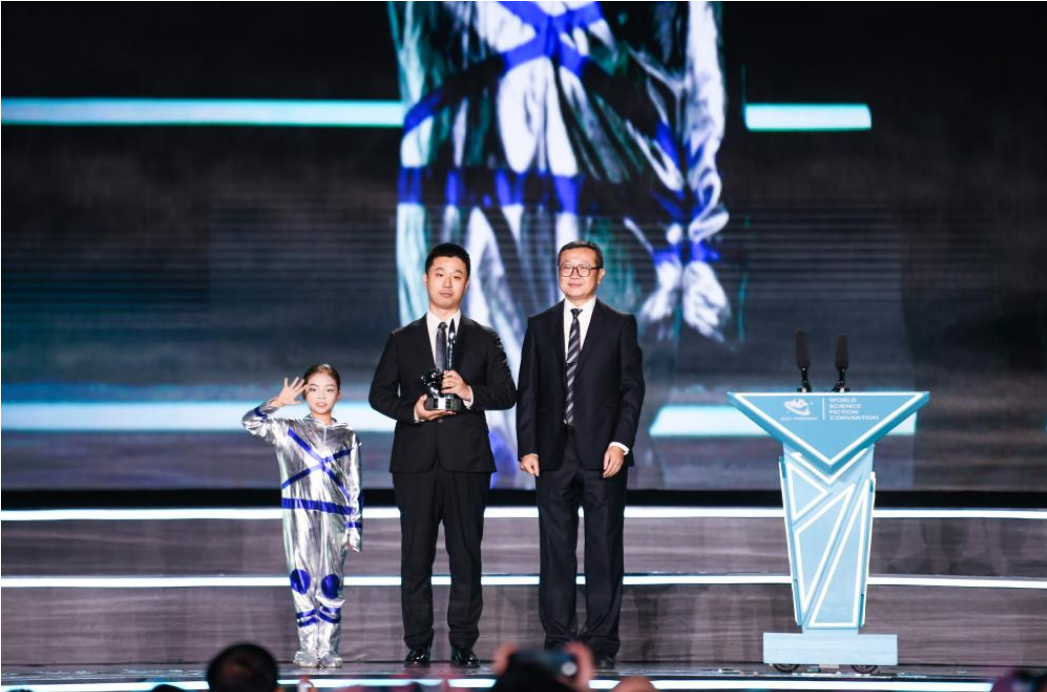
“The Space-Time Painter,” written by Chinese author Hai Ya, won the Hugo Award for Best Novelette at the 81st World Science Fiction Convention (WorldCon), held in the southwestern Chinese city of Chengdu. Hai became the third Chinese winner of the Hugo Award, following sci-fi writers Liu Cixin and Hao Jingfang.
“The Space-Time Painter” was published in 2022. It was inspired by the life experience of the talented Chinese painter Wang Ximeng during the Northern Song period (960-1127), who created the 12-meter-long landscape painting “One Thousand Li of Rivers and Mountains”. “I watched a program of China Media Group named ‘National Treasure Archive’ and the detailed information of the painter of ‘One Thousand Li of Rivers and Mountains’ was introduced, which interested me,” Hai said, adding that the painter was a gifted young man but was never seen again in history, which is a concept (概念) that could be explored with science-fiction.
Based on the life of Wang, Hai created a painter named Zhao Ximeng, a prodigy (神童) that painted for the emperor more than 1,000 years ago. After much misery and suffering, Zhao gave up his physical body and entered a space where a modern policeman that was investigating a case concerning an ancient painting got into his memory. It tells a story about the political power struggle of the time combined with diverse elements such as Chinese traditional culture, history, and science fiction. In this story, Hai did his best to balance the relationship between story, characters and history, hoping to bring readers a good work.
Hai, also a financial worker, thinks himself more of a sci-fi enthusiast than a writer. “I write while doing my job, so I have very little time to write every day,” he said. ‘But I think as long as I love it and am willing to put efforts in it, I will see hopes and the dawn.”
1.What can we know about Wang Ximeng?
A His dream.
B His suffering.
C His occupation.
D His character.
解析:选C。C细节理解题。根据第二段的“the talented Chinese painter Wang Ximeng”可知,文章提到了王希孟的职业。故选C。
2.How was Zhao Ximeng’s life?
A Tough.
B Romantic.
C Mysterious.
D Pleasant.
解析:选A。A细节理解题。根据第三段第二句“After much misery and suffering”可知,以王希孟的人生经历为原型,海漄在小说中创作了一位名叫“赵希孟”的画家,他是千年前为皇帝作画的神童,经历了诸多苦难。即他的人生过得很艰难。故选A。
3.Which of the following statements is TRUE about Hai Ya?
A He is a professional writer.
B He is a hard-working person.
C He gave up his job as a financial worker.
D It is easy for him to finish “The Space-Time Painter”.
解析:选B。B细节理解题。根据最后一段的“so I have very little time to write every day”和“as long as I love it and am willing to put efforts in it, I will see hopes and the dawn”可知,海漄每天几乎没有时间写作,但他认为,只要他热爱写作,并愿意为此付出努力,就会看到希望和曙光,由此可知他是一个努力勤奋的人。故选B。
4.In which section of a newspaper may this passage appear?
A Society.
B Finance.
C Fashion.
D Literature.
解析:选D。D推理判断题。本文主要讲了中国90后科幻作家海漄获雨果奖,属于“文学”版块的内容。故选D。